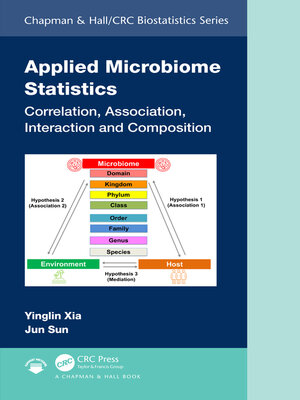Applied Microbiome Statistics
ebook ∣ Correlation, Association, Interaction and Composition · Chapman & Hall/CRC Biostatistics
By Yinglin Xia

Sign up to save your library
With an OverDrive account, you can save your favorite libraries for at-a-glance information about availability. Find out more about OverDrive accounts.
Find this title in Libby, the library reading app by OverDrive.



Search for a digital library with this title
Title found at these libraries:
| Library Name | Distance |
|---|---|
| Loading... |
This unique book officially defines microbiome statistics as a specific new field of statistics and addresses the statistical analysis of correlation, association, interaction, and composition in microbiome research. It also defines the study of the microbiome as a hypothesis-driven experimental science and describes two microbiome research themes and six unique characteristics of microbiome data, as well as investigating challenges for statistical analysis of microbiome data using the standard statistical methods. This book is useful for researchers of biostatistics, ecology, and data analysts.







